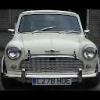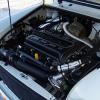Posted 02 January 2010 - 01:04 PM
11 November 2004 (revised: 06 December 2004)
DAMPERS (SHOCK ABSORBERS) 15th September 2004
By keith
Begin date 07-Jul-2005 End date 08-Jul-2050
Technical lowdown on dampers (shock absorbers),what to look for and what to buy
Having introduced the fairly unknown Kayaba (KYB) range to the mini market in 1997 I am still amazed how gullible people are when buying cheap dampers. I have tried every type popular type available in the last 35 years, Armstrong including their adjustables, Girling, Lockheed, Koni, Spax., Avo, Bilsteins, Monroe, Boge, Gabriel, Sachs and the last arrival G Max.
The best to date were probably the very expensive special design Koni Sport twin tube adjustables that we had built for the Monte Carlo Rally in 1994/5. I also used the spare set on my 8 port car as they were the only type that erased the wheel tramping I was experiencing. You get what you pay for? For a non adjustable mono tube type I rate Bilsteins very highly but like Konis are expensive, but again you get what you pay for. The essence of a quality damper is to upgrade its performance by using a more sophisticated higher quality component build, by way of the valving, piston, rod and seals etc along with an extra performance upgrade to improve the cars road holding. Cheap upgrades simply make the damper stiffer to make it feel like an improvement. Often this is not long lasting since poor grade oil/gas tends to degrade very quickly when the damper is stiffer because it gets hotter. You can however make a cheap damper with quality oil/gas components in relatively low volumes, but Kayaba only manage it because they are the largest manufacturer of dampers on this planet and have all the facilities and technology to mass produce millions of components to share amongst their range.
Some companies who claim their damper is 25% up-rated really do not help, because as you might ask, what are they a 25% upgrade on ?, They don’t tell you that, especially if they are not UK based and only make one damper, therefore they have nothing to compare it with.. If they stake their claim on a standard Mini damper, which one are they talking about as Rover/Unipart have changed suppliers many times. Many of these sort of claims are speculative and usually unproven. For reference, Unipart presently supply Sachs;
On high pressure gas filled dampers the piston mounted valve will have a dual duty, dealing with both bump and rebound control, it therefore has to be very well developed, and made of quality componentry. In this case, the nitrogen is introduced under high pressure-typically 25-30 bar-to the base of the damper. A floating piston is used to separate the oil and gas. When assembled, the air gap is completely removed by this design, vastly improving damper response virtually eliminating aeration and foaming. Nitrogen is slightly compressible. Combining the effects this has with superior valve design, it is feasible to produce a “self adjusting” damper that can out perform many cheap adjustable types. Essentially the self adjustment comes about from the gas being compressed, the more the damper is loaded (by either weight in the car or by cornering forces),it consequently increases the damping performance. The easy test for checking if a gas damper is pressurised ,is that when unbolted it will open up to its full length of travel automatically.
The quality of the piston rod which should be micro smooth and usually hard chromed for long life reliability of the oils seals, is the most important factor.
Multi lip seals and self sealing packing keeps oil in, contamination out, even under repeated hard use. Finally there is a need to minimise foaming which keeps the shock absorber fade free. All these things can only be done by large and leading manufacturers who have test facilities and resources to use performance quality parts as standard in mass production of all their range.
I have been testing Twin Tube Gas dampers which are 8 point on car adjustable on my Twin point mini and although made for standard height they appear to also function perfectly with the car lowered some 35mm. It is superbly priced and will no doubt gradually replace our Koni range. Apart from this new damper which seems exceptional, my summary of current best buys and performers are:
Oil filled ; standard replacement KYB part number front 442001, rear 442002442002
Unipart boxed Sachs part number front GSA71542, rear GSA71543
Gas; the expensive Bilstein , front only C-STR309
the well priced KYB 25% upgrade part number front 342001,rear 342002
and my favourite the KYB Gasadjust part number front 552018, rear 552019
Gas adjustable ;Mini Spares Spax and Gaz are both 28 point adjustable and are both well known and proven in the Mini fraternity for both standard and competition use.
• Gaz front standard height C-STN231, rear C-STN233
• Gaz front lowered height C-STN236, rear C-STN237
• Spax front standard height C-STR306, rear C-STN307
• Spax front lowered height C-STR304, rear C-STR305
Oil adjustable; Koni 20% upgrade and Koni Sport 35% upgrade although still available will Probably be phased out and replaced by 743039 and 743040.
• Koni Front standard height C-STR1675, rear C-STR1794
• Koni Front lowered height C-STR1717, rear C-STR1795
• Koni Sport standard height C-STR1675SPORT, rear C-STR1794SPORT
• Koni Sport lowered height C-STR1717SPORT, rear C-STR1795SPORTd
Twin Tube gas adjustable; my new favourite .Evolution AGX front 743039, rear 743040
Those I have not mentioned or included are either obsolete or not notable enough with no prejudice against any particular manufacturer.
Koni and Gaz have a small plus point,which is that they are both repairable but nobody ever seems to take this action.
Spax latest October 2004 news letter claims that they now use triple oil seals for the piston and double seals for the adjuster to improve weather resistance. Adjustment has been made even easier with better click definition. Damping characteristics have been dramatically improved with better low speed ride quality(no more upset picnic baskets) and better high speed performance (faster track times) Their other claim is that they have a quieter damper operation(no exra squeaks to contend with)? Maybe an optimistic claim for the mini?
The closed length of front adjustable dampers from bush pin centres is as follows
Gaz standard height 230mm and lowered 215mm
Spax standard height 235mm and lowered 220mm
Koni standard height 225mm and lowered 215mm
AGX evolution in standard height only 210mm


















